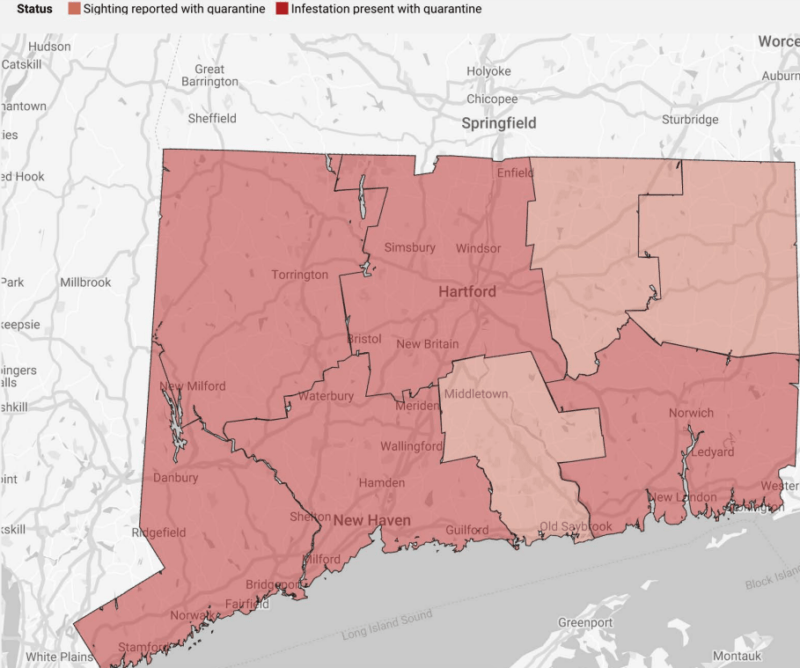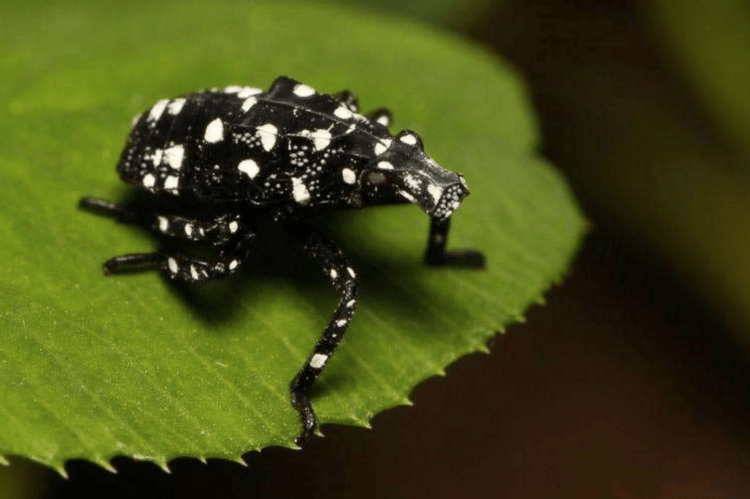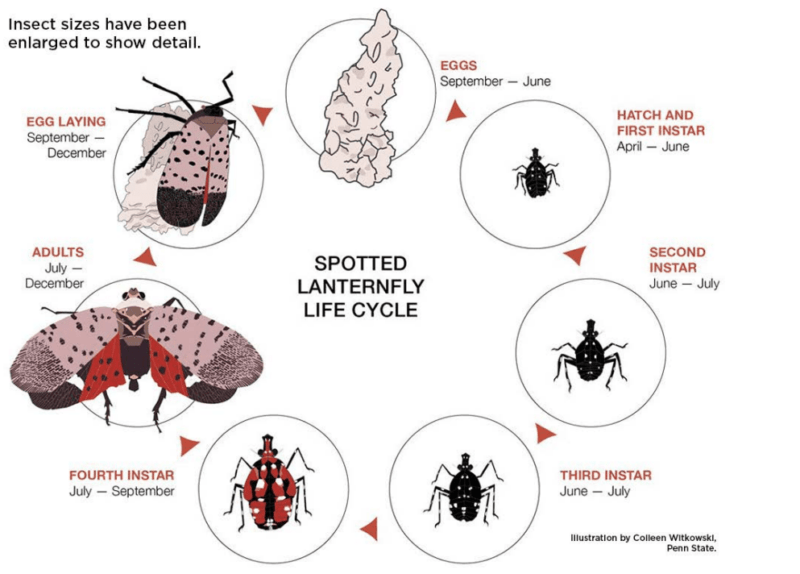
By Elizabeth Barhydt
Greenwich faces a growing ecological and agricultural threat from the invasive Spotted Lanternfly (Lycorma delicatula). Originating from China, this pest has rapidly expanded its presence since first being detected in the state in 2020. With established populations now in Fairfield and New Haven counties and individual sightings in numerous other towns, the Spotted Lanternfly poses a serious risk to a variety of plants and crops, including grapes, apples, hops, walnuts, and hardwood trees. The insect shows a particular preference for the invasive tree-of-heaven (Ailanthus altissima).
Local efforts to combat the Spotted Lanternfly have intensified. Throughout the winter of 2023-24, conservation teams in Greenwich have diligently scraped egg masses from trees in various parks. Additionally, the Parks staff has focused on removing the tree-of-heaven to help curb the SLF population. These management strategies are part of a broader effort guided by the Connecticut Agricultural Experiment Station (CA ES) and the Connecticut Department of Energy and Environmental Protection (CT DEEP).
In response to the spreading threat, CAES issued a quarantine order in 2023, defining restricted areas for the Spotted Lanternfly. This quarantine aims to slow the insect’s spread within Connecticut and provide certification for businesses moving regulated articles out of state, thus protecting the economic interests of the state’s agricultural industries.
The quarantine order emphasizes the significant danger posed by the Spotted Lanternfly to Connecticut’s environment and agricultural sectors. According to CAES, the presence of this pest represents a substantial risk to forests, orchards, vineyards, and nurseries, necessitating stringent management and control measures.
Recommended management strategies by CAES and CT DEEP include:
- Stopping the Spread: Efforts are focused on preventing the further spread of the Spotted Lanternfly.
- Egg Scraping: Removing egg masses from trees and other surfaces to reduce the number of hatching nymphs.
• Tree Traps: Installing traps on trees to capture nymphs and adults, which must be regularly managed and monitored. - Host Removal: Eradicating the tree-of-heaven, the primary host for the Spotted Lanternfly.
- Insecticides: The use of contact and systemic insecticides is still under study. Residents are advised to follow proper application guidelines and safety measures when using these chemicals to avoid harm to water, soil, and other pollinators.
For further information on Spotted Lanternfly management, residents can refer to the following resources:
Spotted Lanternfly Management for Residents: https://portal.ct.gov/CAES/PDIO/Fact-Sheets/Spotted-LanternflyManagement-for-Residents
Spotted Lanternfly Article by Charlie Meyers: https://portal.ct.gov/CAES/PDIO/Fact-Sheets/Spotted-Lanternfly-Article-ByCharlie-Meyers
How to Make a Trap Safely: https://portal.ct.gov/CAES/PDIO/Fact-Sheets/How-to-Make-aTrap-Safely
As Greenwich continues to confront this invasive pest, collaboration between state agencies, local authorities, and residents remains vital.






